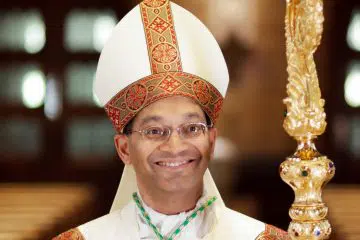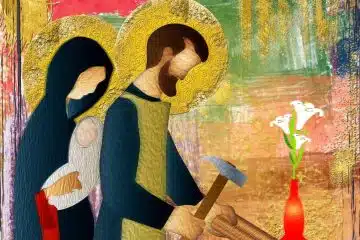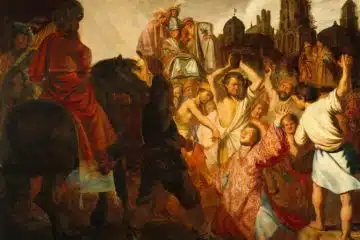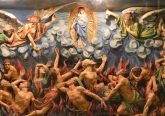The Church as One
I have heard there are four marks of the Church: one, holy, Catholic, and apostolic. Because there are many forms of Christianity, what does “one” mean in this context?
Before his Crucifixion, Jesus prayed for his followers’ unity: “That they may all be one, as you, Father, are in me and I am in you” (Jn 17:21). Catholics have understood this as Jesus’ desire that all be united in faith and practice. The Church’s oneness is seen in several ways, all of which reflect its nature and mission.
Unity in Faith
The Church is one because of its source, the unity of the Trinity, and its one founder, Jesus. It professes a common faith rooted in Scripture and Tradition. The Church’s faith is most readily seen in the Nicene Creed, a shared declaration of belief among Christians. In this way, many Christians—even non-Catholics—share in the oneness of the Church and in Christ.
The unity in faith extends to the Church’s teachings that have come down to us from the apostles and continue today through the magisterium, which is the teaching ministry of the Church’s leaders. Our faith as believers is not a collection of individual beliefs but a unity safeguarded by the Church’s teaching office.
Unity in Governance
The Church displays visible bonds of unity through its governance. The pope is the vicar of Christ and universal shepherd. He, along with the bishops in communion with him, are responsible for governance of the Church. This hierarchical structure, rooted in Christ’s commission to the apostles and confirmed by history, is intended to maintain unity of doctrine and practice. The splintering that has occurred within Christianity, especially since the Protestant Reformation, highlights the importance of having a visible center of unity.
Unity of Sacraments
The Church’s oneness is seen in its sacramental life, especially in the Eucharist. The Eucharist is the source and summit of the Christian life, and participation in common worship and sacraments expresses the deep communion among Church members. Through their participation in and reception of the Eucharist, the faithful are united not only with Christ but also with one another—even those souls who went before us and are now participating in the heavenly liturgy.
Oneness with Diversity
While the Church is united in numerous ways, it is also marked by a diversity that comes from “the variety of God’s gifts and the diversity of those who receive them” (Catechism of the Catholic Church, no. 814). The one Church is manifested through a variety of cultures, languages, and traditions.
This is seen in part in the Church’s liturgical life, including multiple rites (e.g., Maronite, Byzantine, Ukrainian) that each have unique spirituality, traditions, and canon law, even while they are in union with the papacy and in communion with the members of the Latin (Roman) Church. Such diversity is not opposed to unity; rather it helps the Church be more catholic because it reflects the universality to which it is called.
Christ has safeguarded the Church’s unity for over two thousand years. Even amid heresy, conflict, and imperfect leadership, its essential unity has been maintained. That the Church is older than any government, organization, or entity is a testimony to Christ’s words: “There will be one flock, one shepherd” (Jn 10:16). ✣
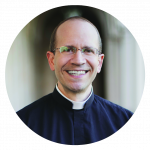 Father David Endres is professor of Church history and historical theology at Mount Saint Mary’s Seminary and School of Theology.
Father David Endres is professor of Church history and historical theology at Mount Saint Mary’s Seminary and School of Theology.
This article appeared in the September 2025 edition of The Catholic Telegraph Magazine. For your complimentary subscription, click here.


